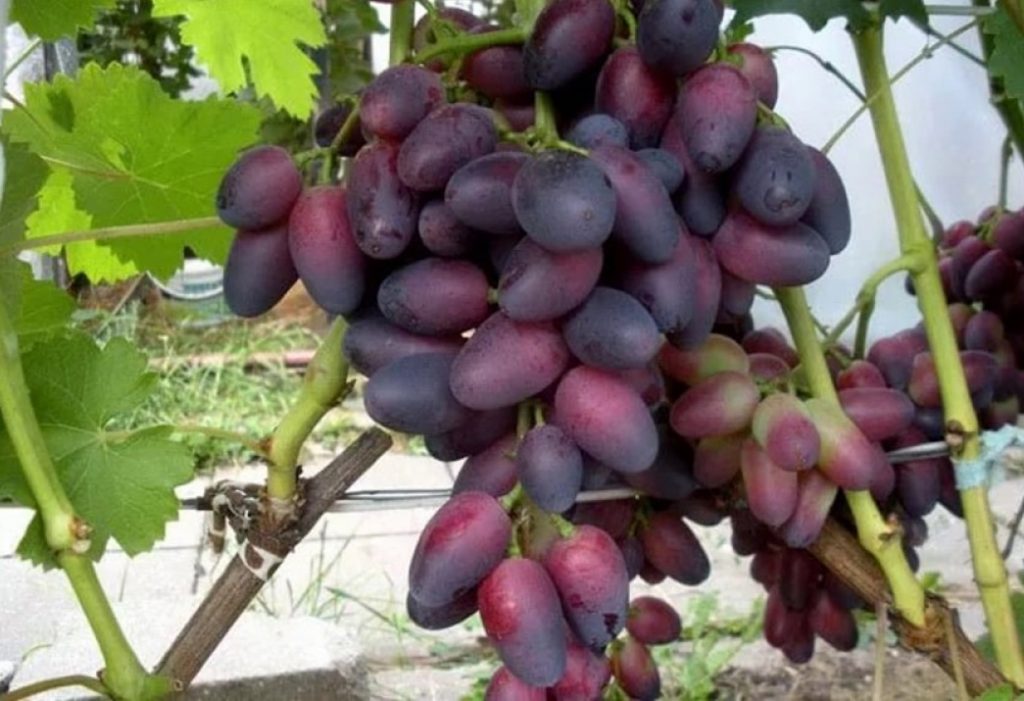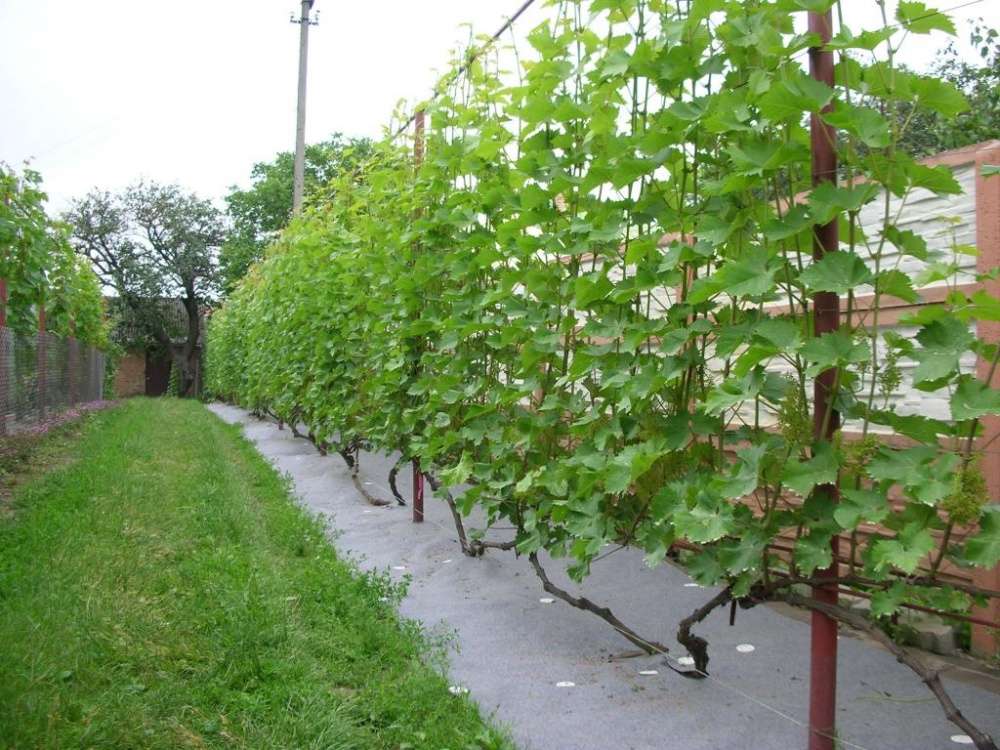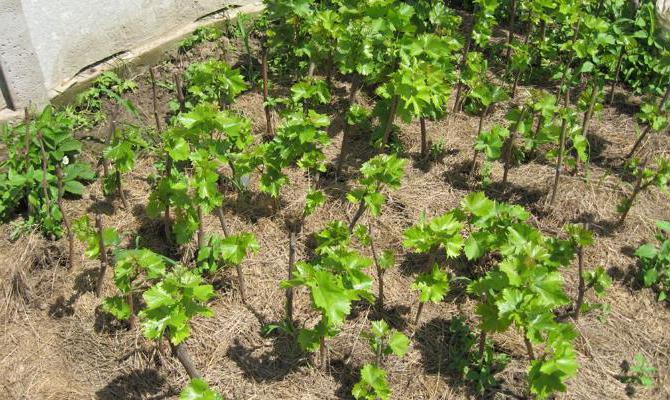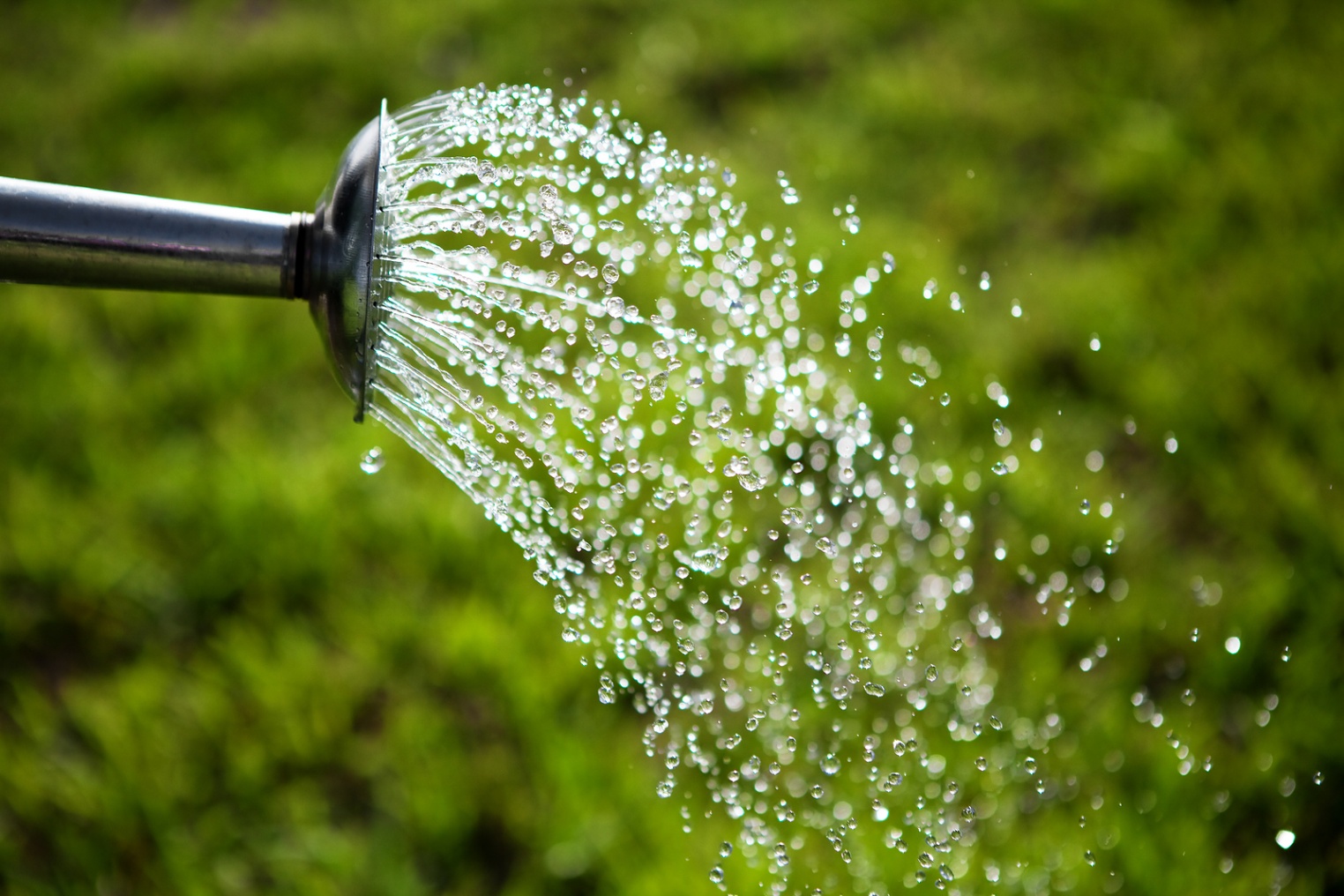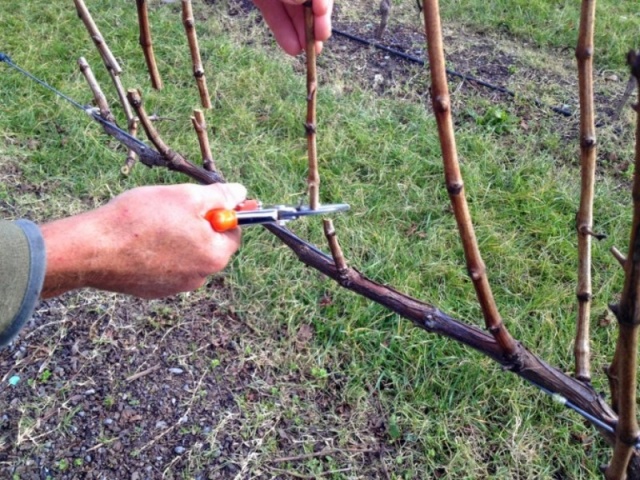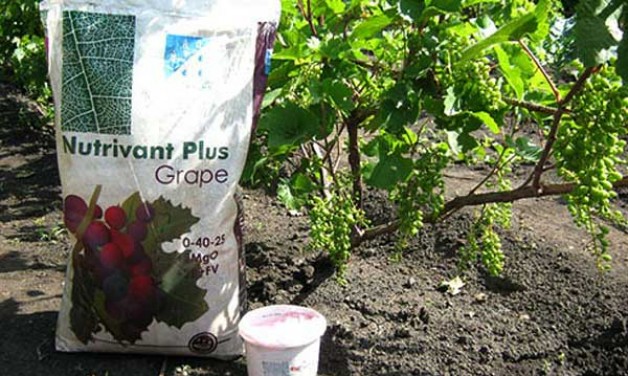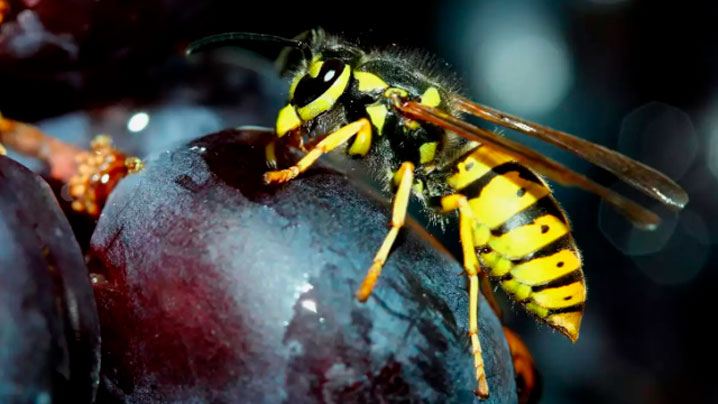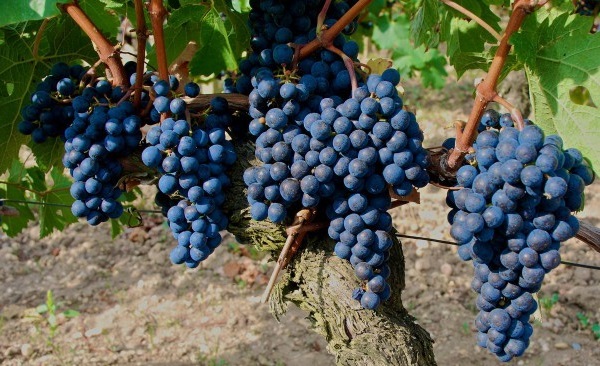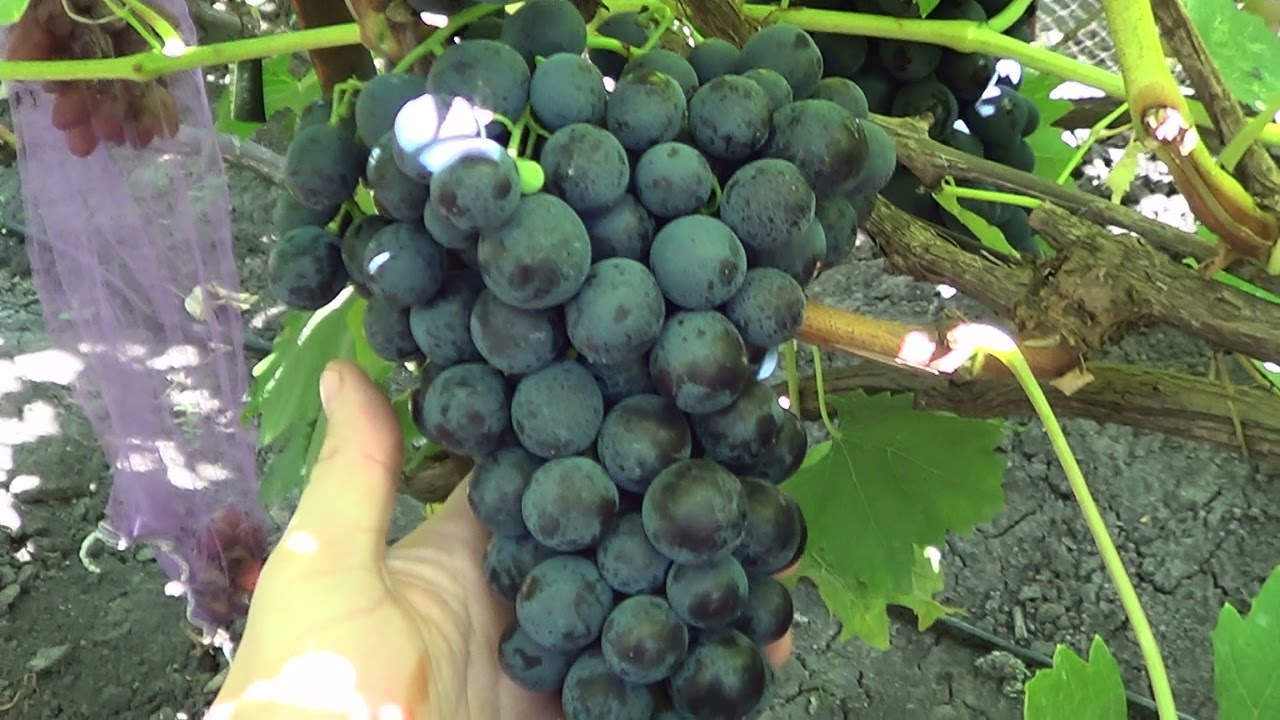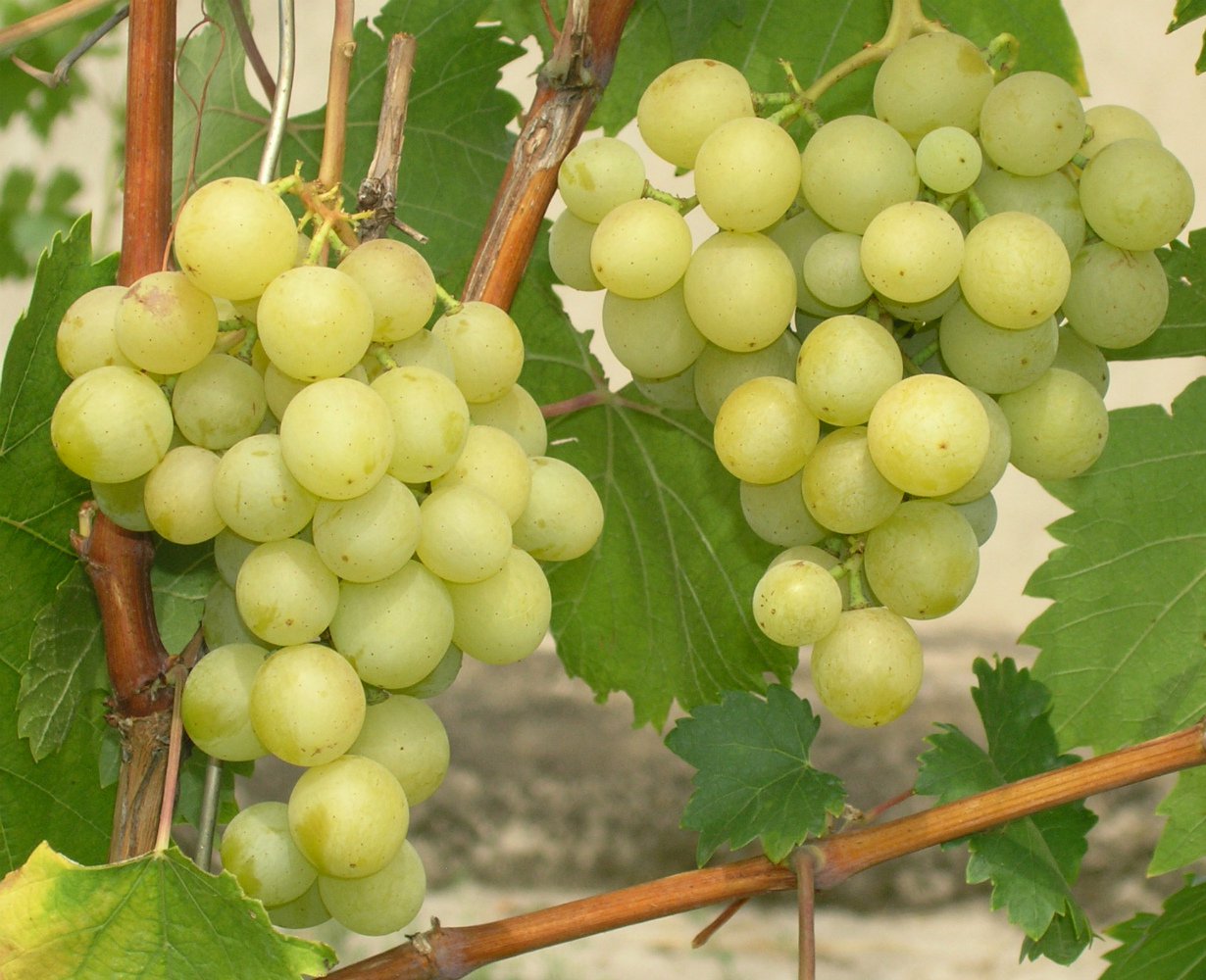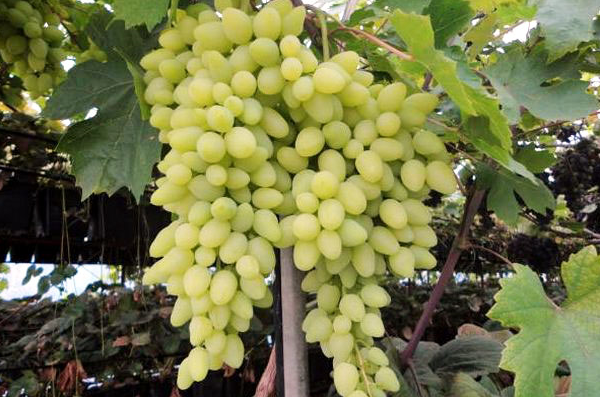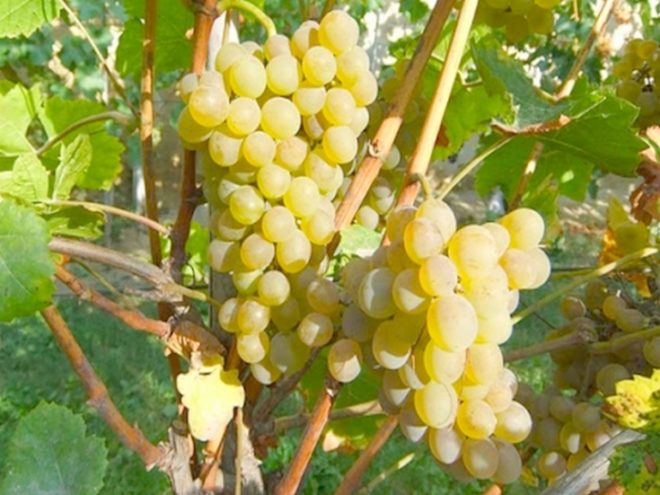Content:
Each type of grape has its own individual properties and characteristics. The most delicious and beautiful varieties include Beauty, which was obtained by crossing pink Victoria and a pollen mixture of Amur-European varieties. The emergence of new grapes became possible thanks to the efforts of the breeder E. G. Pavlovsky. The berries fully justify their name: they have an elongated, refined shape, similar to a heart.
Pretty grapes: description
Grape Beauty has the following characteristics:
- bushes of medium height;
- differs in average frost resistance;
- the bunches have an elongated shape, the berries are large, the weight of one bunch is up to 1 kg;
- both male and female flowers are formed;
- fruits ripen in 105 - 115 days;
- the arrangement of berries on a bunch is free;
- the color of the skin is dark pink with a transition to purple;
- has excellent taste;
- sugar is 15%.
Bunches of this variety retain their presentation for a long time, they tolerate transportation to the point of sale well.
Krasotka does not have high yields, but the variety bears fruit stably. The plant has a powerful root system, thanks to which the grapes are provided with the necessary amount of nutrients. The seeds in fruits are a rather rare phenomenon, and if they are found, then there are no more than 2 of them.
Landing
Like other grape varieties, Beauty is very fond of sun and light, needing a lot of heat. As for the soil, there are no special preferences, you can choose any soil, but do not forget about the drainage system. It is recommended to plant grapes on the south or southwest side of the vineyard.
If planting is planned in the suburbs, then a place next to a fence or wall is suitable for this variety. The area where cold air circulates and stagnates is not suitable for Beauty.
The following types of soils are considered the most successful for grape crops:
- sandstone;
- black soil;
- rocky ground;
- crushed stone soil.
Before starting planting, you need to prepare the soil in advance. The selected area is dug up and, if the soil is acidic, lime is added. Manure, humus, ready-made vitamin complexes are suitable as additional fertilizers.
Special requirements are put forward for the planting hole: the quality of the soil will become noticeably better if aeration is performed, as well as a mixture of crushed stone, earth or sand is added. The soil poor in phosphorus or heavy black soil is fertilized with superphosphate.
For sandy soil, you will need the following types of fertilizers:
- manure;
- humus;
- peat;
- compost.
If planting work will be carried out with the onset of spring, then the finished pit can be left for the winter.Autumn planting involves the start of work in the summer.
In order not to miscalculate with the choice of a seedling, it is best to contact a specialized center to acquire a young plant. It is recommended to buy those grapes that already have several white roots, and the shoots themselves have acquired at least three blossoming leaves.
The stalk must be placed in a pre-prepared hole so that the roots lie at a depth of 50 cm from the surface. The plant is sprinkled with garden soil and fixed to the support post. The planted grapes need watering, for one shrub you need 2 buckets of water. After sedimentation of the soil, it is necessary to mulch the near-stem section.
Subtleties of care
There is nothing difficult in taking care of the Beauty. Plants needs the following:
- watering;
- soil mulching;
- shelter for the time of frost;
- pruning vines;
- top dressing;
- protection against pests.
Proper watering
The first year after planting, the grapes will need regular watering. If it is rainy, cloudy weather, then it is necessary to water once a week. With the onset of hot, sultry days, watering is carried out every other day.
In the second season, they are watered less often: once before the buds begin to bloom, after flowering and while the berries are growing. Watering is stopped 7 days before the bunches are fully ripe.
Mulch application
Mulching of grape bushes is a necessary measure. Thanks to it, moisture will be retained in the soil layer, the number of weeds will decrease, and nitrogen necessary to feed the grapes will accumulate. Almost anything can be used for mulching, from straw to humus.
Is it worth sheltering for the winter
To date, it is not completely clear how well Pretty Woman tolerates frosts, and therefore it is better to think over a shelter in a timely manner. This is especially true for regions where there is little snowfall in winter.
Next to the grape bushes, you need to make a small depression and fill the trunk with soil and sawdust. The latter will just perfectly keep warm. After pruning, the vine is neatly tied and bent to the ground. A cardboard box is laid on top of the plant, and a layer of earth is sprinkled around the edges. You can open the grapes after the snow has melted (most often this is done in April).
Pruning
Removing excess branches has a beneficial effect on the growth of grapes and allows you to get a rich harvest every year.
In the first year of crop growth, the tops are removed from the shoots. This is done with the onset of August. After the leaves fall off, you need to leave a few buds and cut off everything that grows above.
In the second year, the most powerful vines are chosen in a total of 4 pieces, on each of which 5 buds are left, and all the rest - weak and dry - are removed. At the end of the third season, the procedure is repeated. Correct pruning leads to the fact that Beauty has 4 fruitful vines by the age of 4. To build up the strength of the shrub, fruit shoots are increased, on each of the vines there should be 3 of them. Also leave the vines growing from the root system.
Top dressing
It is difficult to get a good and rich harvest without fertilizers and fertilizing. Directly in the first year of life, you can do without the introduction of useful elements, the plant will have enough to be laid when planting. But next year the grapes need to be fed.
Fertilizers are applied depending on the growing season. In spring, increased root growth begins, shoots and leaves develop, which means that the plant will need nitrogen. Phosphorus and potassium are needed during the formation of flowers and berries. Both of these fertilizers help the shoots ripen and store sugar in the fruit.
In the fall, while digging up the soil, Pretty Woman is fed with manure, peat or compost, but this should be done once every 3 years. For mineral fertilizers (dry, liquid), such a strict requirement is not put forward, they can be applied every year.
Before removing winter shelters from grape bushes, you can feed the shrub with the following beneficial substances:
- ammonium nitrate;
- superphosphates;
- potassium salt.
All of the above dressings are diluted with water. You need to dig shallow grooves between the rows of plantings, and then apply fertilizer.
How to protect grapes
To prevent damage to the crop, it is worthwhile to think in a timely manner about preventive measures and protection against various insects and diseases.
Wasps
These insects are the scourge of viticulture, as they greatly harm the bunches. You can fight the misfortune with the help of chemicals. However, it is worth knowing that positive results (getting rid of wasps) border on negative ones, since people who eat the fruits are often harmed.
The easiest and safest method is to use gauze pouches to close the bunches to keep the berries intact.
Cracked berries
This is considered Beauty's biggest flaw. Berries can burst, crack during rainfall, watering or when there is a lack of moisture. Because of this, you can lose up to 60% of the crop. The solution to the problem is the timely collection of grapes as they ripen. Also, to strengthen the berries, they can be sprayed with calcium nitrate, but strictly 1 week before the expected date of precipitation.
Advantages and disadvantages of the variety
The pluses of Beauty include:
- early maturation;
- attractive appearance of berries;
- easily resists some diseases, for example, gray rot and mildew;
- average but stable yield.
Among the disadvantages are the following:
- skin bursting due to rain and heat;
- due to the high sugar content in berries, it is a favorite delicacy of wasps, which can pretty much spoil the presentation.
Of course, the presented disadvantages easily overlap the advantages of the variety, which are 2 times more. At least for the sake of this, the winegrower should try to plant the Beauty at the summer cottage.
